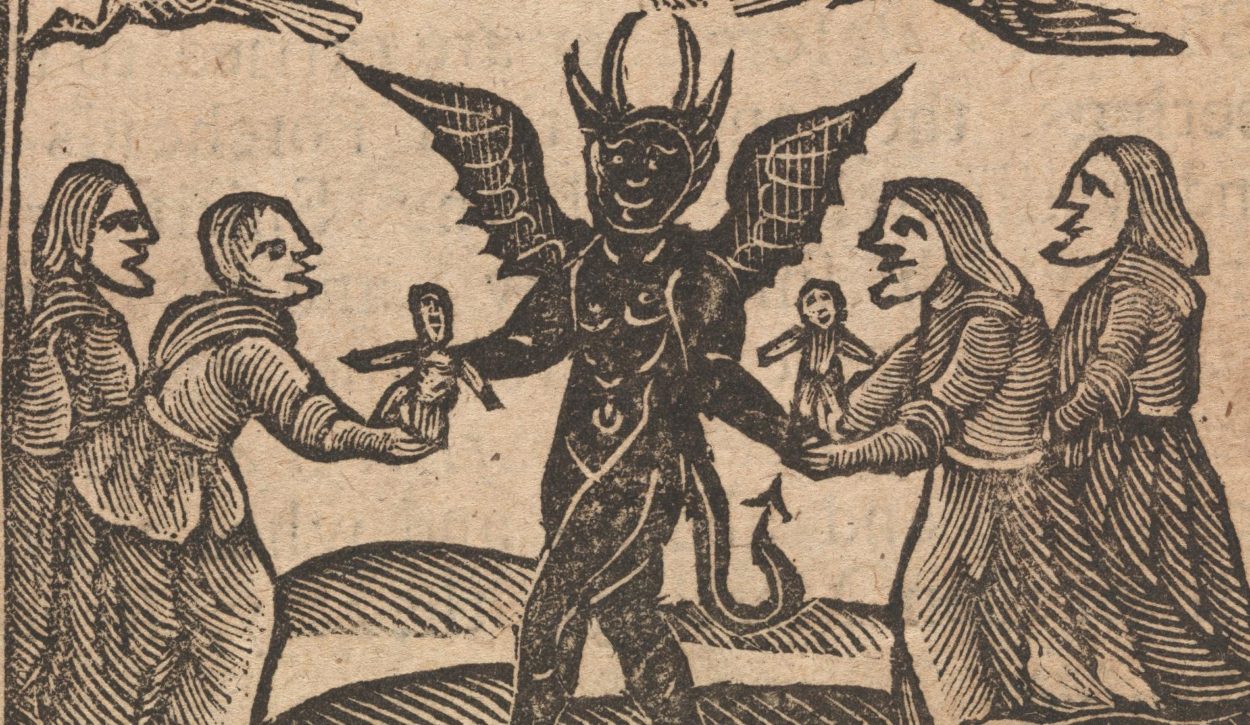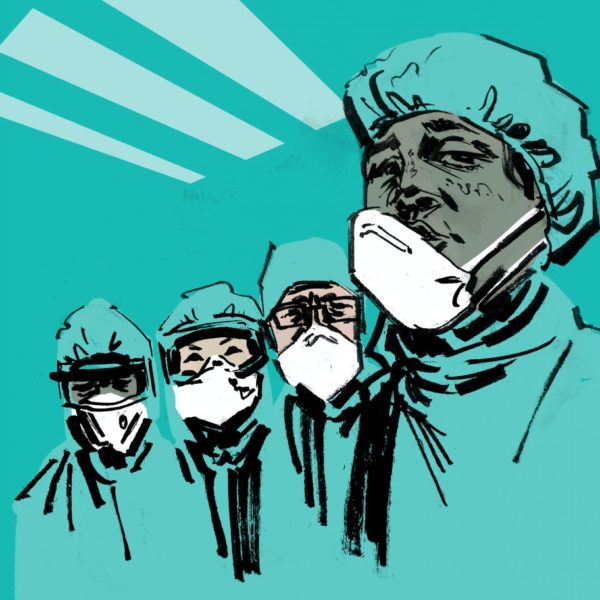The title of this column is a reference to an oft-quoted line from a 2007 episode of Scottish sitcom Still Game. I’ve considered that this might be a slightly niche reference for the vast and varied Clitbait readership, but I thought it was funny. Anyway, this is about Scottish witches…

“Back Aff Ya Spooky Witch”: A Brief History of Scottish Witch Trials

Learning With Lucy
‘Learning with Lucy’ is a monthly column from writer Lucy Wilson. Each month, she will share her thoughts on a particular topic she has been learning about, or something she has been thinking about, in her attempt to become a better informed intersectional feminist. The column will (hopefully!) be a fun and informative journey into a wide variety of topics – from real-life issues to abstract concepts, current and historical, close to home and further afield. Lucy is excited to learn with you and she hopes you are excited about Learning with Lucy.
Happy Halloween!! (I’m writing this in mid-September.) The title of this column is a reference to an oft-quoted line from a 2007 episode of Scottish sitcom Still Game. I’ve considered that this might be a slightly niche reference for the vast and varied Clitbait readership, but I thought it was funny. Anyway, this is about Scottish witches.
Edinburgh University’s School of History, Classics and Archaeology has an online resource called The Survey of Scottish Witchcraft, which includes a database of all people known to be accused of witchcraft in Scotland. I saw it mentioned online last summer and immediately opened the link on my phone, where it remained, unread. So I’m very glad to have finally had an excuse to make myself read it. If I apply this tactic to all the ‘read later’ tabs I have open, I’ll have content for 228 columns. My not having looked at it for over a year says far more about my personality than it does about the quality of the content – it’s a genuinely interesting read. Here’s a link to the website where you can search the database, use interactive maps and even download the entire archive for detailed analysis if you’re so inclined.
The creators have identified a total of 3837 people who were accused of witchcraft in Scotland, which they believe to be a fairly accurate figure, although not quite complete. The ‘witches’ were accused of offences under The Witchcraft Act (1563-1736). This probably goes without saying, but none of these people were actually witches. They were mostly women of middling wealth, 75% of whom were aged between 30 and 60. They dressed in normal clothes of the day, didn’t worship the devil and had no unusual involvement with broomsticks. They generally became known as witches through local gossip – if two people had had an argument after which one of them ‘suffered a misfortune’, they might believe the other person had bewitched them in revenge.
This testimony from neighbours was often used as evidence during the trials. Someone might have had a local reputation of being a witch for many years before being formally accused. The trials also relied heavily on confessions often extracted under torture. The accused would likely name other witches when asked for their accomplices, who would then be arrested and interrogated themselves – this happened particularly during more intense periods of witch-hunting. Another form of evidence used in the trials was the presence of the ‘devil’s mark’, which was thought to be given to the witches when they made a pact with the devil. It took the form of a blemish or an ‘insensitive spot’, which would be pricked with a pin by interrogators or professional witch-prickers. What a job title.
Before reading into it, when I thought of witches, the first three things I thought of were women, burning alive and the drowning test. None of these were quite right. 15% of those accused of witchcraft in Scotland were men (interestingly and unrelatedly, this number was 90% in Iceland). Although the outcomes of only 305 trials are known, they say only a very small number are known to have been burned alive; it was far more common to be sentenced to strangling and burning. I was particularly surprised by the truth about the drowning test. I had always read that suspected witches were thrown into lakes: if they were witches they floated (and were then burned alive), and if they weren’t, they sunk and drowned anyway. Turns out that’s not true – they had ropes tied to them to pull them out of the water! This test was actually hardly ever used in Scotland, having been discredited as early as 1597, only 34 years after The Witchcraft Act was enacted.
I searched the database for my hometown, but was disappointed to find little to no information. So I had a look at Edinburgh, and clicked on Bessie Wilson for the very sophisticated reason that we have the same surname. She turned out to be a very interesting read. She had been implicated by another witch (a common theme among the entries), and her case was categorised as ‘demonic’. It says she met with or saw the devil and that the ‘Devil came in black clothes like a gentleman, and looked like her husband.’ She made five types of demonic pact, some of which I really have no idea how to understand: ‘anti-baptism’ (okay), ‘head and foot’ (what?), ‘servant’ (kinky), ‘sex’ (sure) and ‘want nothing’ (???). Bessie apparently attended witches’ meetings and the devil was present (in the likeness of her husband). It seems one of the places she attended a witches’ meeting was her own bed – I can only assume that was where she carried out the sex pact with the devil who looked like her husband. She made two confessions in advance of her trial on the 7th of August 1661, where she was found guilty and sentenced to execution. She was executed a month later by the ‘strangle and burn’ method.
At some point before her execution, she named two other witches. One of these was Bessie Flinker, who also saw a non-natural being appear ‘as her own husband’ and took the same five demonic pacts as Bessie Wilson. When she went to witches’ meetings with the devil present, she was ‘[taken] to a meeting in the hills, by a whirl wind. She masked herself at her meeting and was assigned a certain number of a malifices’, which I think is both very poetic and very ahead of her time mask-wise. Unfortunately, there’s no information on what happened at her trial, but it’s suggested she might not have been present.
The other witch implicated was Issobell Dodis, who funnily enough had also taken those five demonic pacts. Her trial was on the same day as oor Bessie’s, but the action against Issobell was dropped. The pre-trial notes say, ‘In her confession her meetings with the Devil turned into possibly being men she encountered in daily life.’ I’m as surprised as you are. Despite the case against her being dropped, she still managed to continue the grassing trend by naming six other witches. I’ll spare you the rest of my exploration down this rabbit hole and suggest you have a search yourself; it’s a very easy database to accidentally spend a lot of time on.
I found that looking at the details of specific individuals’ cases makes the people of so long ago feel a lot more real. Suddenly ‘the witch trials’ stop being an abstract idea belonging to fiction and become a real tragedy. Real people like Bessie and Bessie and Issobell, with real lives and real husbands and real houses, were arrested, punished and even killed essentially because their neighbours didn’t like them very much. That’s not a very cheerful note to end on, so let’s call it a macabre note and make it Halloweeny.
One more thing: if you ever have to dress up for Halloween and don’t feel like doing a whole costume, wear your normal clothes and say you’re dressed as a modern interpretation of someone accused of witchcraft. Just make sure to have a good fight with your neighbours first.



Leave a Comment